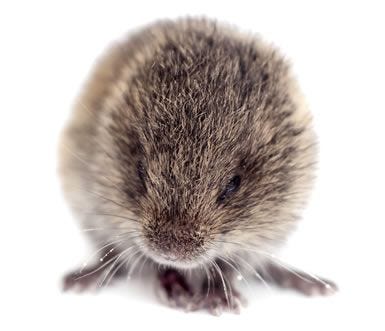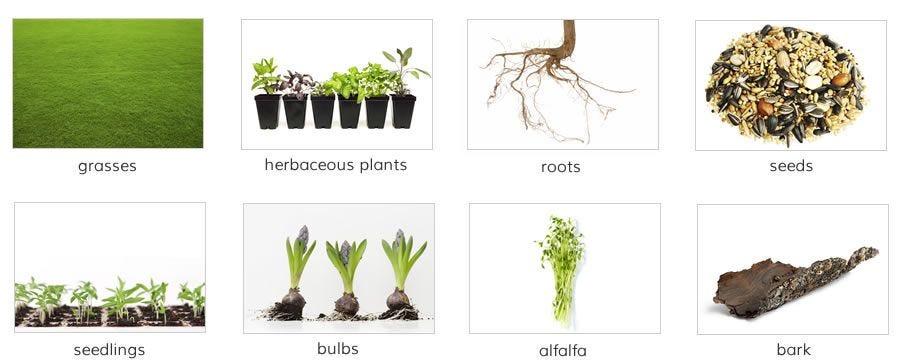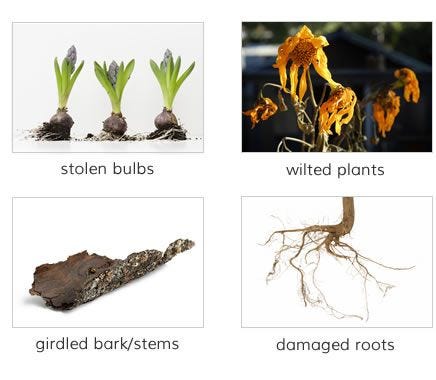





Voles
Vole Facts
Voles are mouse-like rodents known mostly for damaging grass, bulbs, trees and plant roots. Their semifossorial nature and penchant for groundcover makes them a challenge to identify and control, however certain information about voles can be useful in understanding how to prevent their damage. Havahart® provides vole facts below, including what they like to eat and how to identify signs of damage.

General Vole Facts
- Most Common North American Species:
- prairie vole (Microtus ochrogaster)
- meadow vole (Microtus pennsylvanicus)
- long-tailed vole (Microtus longicaudus)
- pine vole (Microtus pinetorum)
- montane vole (Microtus montanus)
- Oregon vole (Microtus oregoni)
- California vole (Microtus californicus)
- Average Size: 4-9" long (including the tail); 2 oz.
- Average Lifespan in the Wild: 3-6 months
- Identifying Features: round, stout body; grey or brown fur; short tail and legs; blunt nose; tiny eyes and fur-covered ears.
Vole Geography and Habitat

Voles are rodents of the Northern Hemisphere, inhabiting North America, Europe and Asia. There are 124 species, 23 of which are native to the United States.
One vole's home range is usually no larger than 1/4 acre. Depending on their species, voles thrive in a range of different habitats, all of which have dense ground cover. As semifossorial rodents, voles commonly spend much of their time underground in complex burrow systems as part of a colony. Here they nest, seek protection and feed on vegetation from under the earth's surface.
Vole Diet
Primarily herbivorous, voles commonly feed on grass, as well as the seeds, roots, stems and leaves of plants. On rare occasions voles will eat insects and snails, but they certainly have a strong preference for vegetation.
Some favorite foods include:

Vole Behavior
- Activity: Voles are active at all times of the year, day and night, and they do not hibernate.
- Reproduction: As some of the most prolific breeders in the rodent family, voles can produce 5-10 litters per year with 3-6 young per litter. Voles reproduce throughout the entire year, with peak rates in the spring and summer.
- Burrowing: Within their home ranges, voles may dig several burrows to use for shelter and protection. Extensive runways connecting these burrows are paved underground as well as aboveground and even through snow. Occasionally voles will use tunnels already excavated by other burrowing animals, such as moles.
Identify Vole Damage
Because voles spend most of their time under cover or underground, their presence is not always evident until major damage occurs. It's important to understand the signs of voles so that you can choose and implement the proper control method right away.
Common signs of damage include:

- surface runways: irregular paths of clipped and trampled grass or soil, about 1-2" in width
- holes in lawn: clean, round holes about 1.5" in diameter, often in line with surface runways
- girdled bark/stems: irregular gnaw marks about 1/8" wide, 3/8" long and 1/16" deep, along the very bottom of trees or plants
- damaged roots, which may lead to delayed or lack of fruit production in trees
- yellow, wilted plants
- stolen bulbs
Fun Facts
- Many vole species are skilled swimmers. In fact, the European water vole can swim up to 50 ft. underwater.
- Voles are closely related to hamsters, sharing the same taxonomic family - Cricetidae.
- Some North American vole species are arboreal, like the red tree vole. These voles are excellent climbers and can be found living in trees in the forests of the Northwest.
- The highest recorded vole population density is 2,000 voles per acre.
- Some vole species are monogamous, while others are not. Scientists have found monogamy to be dependent on the location of vasopressin - a hormone released during reproduction - in the brain.
